GA4 Lead Generation Reports: Track and Improve Leads
Benjamin Mangold
Track Leads with Lead Generation Reports in Google Analytics
If your goal is to generate leads on your website, then the new lead generation reports in Google Analytics 4 (GA4) are going to be especially helpful. These reports are designed to show you how people discover your website, how they progress through your lead funnel, and where you might be losing potential customers along the way.
Whether you’re tracking quote requests, demo bookings, contact form submissions, or callback requests – the lead generation reports in GA4 help you understand what’s working and what needs improvement.
In this guide, we’ll look at how to access these reports, the key events you’ll need to implement, how the metrics are calculated, and how to use the new audience templates to enhance your advertising and analysis.
You can also follow along in my GA4 Lead Generation Reports walk through:
Table of Contents
- Where to Find the New Lead Generation Reports in GA4
- Understanding the Lead Generation Reports
- Using GA4's Lead Generation Audience Templates
- How to Implement the Lead Generation Events
- Why the Lead Generation Reports Matter
- Frequently Asked Questions (FAQ)
Where to Find the New Lead Generation Reports in GA4
To find the new lead generation reports, head to the 'Reports' section in your GA4 property.
If you've already added the Business Objectives collection, you’ll see a section called 'Generate Leads'. This includes two new dedicated reports:
- Lead Acquisition which shows you how people arrive on your website and become leads
- Lead Disqualification and Loss which helps you understand why some leads don’t convert
If you haven’t added the Business Objectives collection, the Lead Acquisition report might still be available in the 'Life Cycle' collection. To check, navigate to 'Reports', look for 'Life Cycle, and then select 'Acquisition'. You’ll see the report listed as 'Lead Acquisition' if it's available in your property.
If you don’t see the lead generation reports in your GA4 property, it likely means the Business Objectives collection hasn’t been added yet. You can add it by heading to the 'Library' at the bottom of the 'Reports' section.
In the Library, click 'Create New Collection', then choose the 'Business Objectives' template. This will add a set of pre-built reports, including the 'Generate Leads' section.
Once you've made any changes to the collection (for example, removing reports you don’t need), click 'Save', then select 'Publish' to make it visible in the main reports menu.
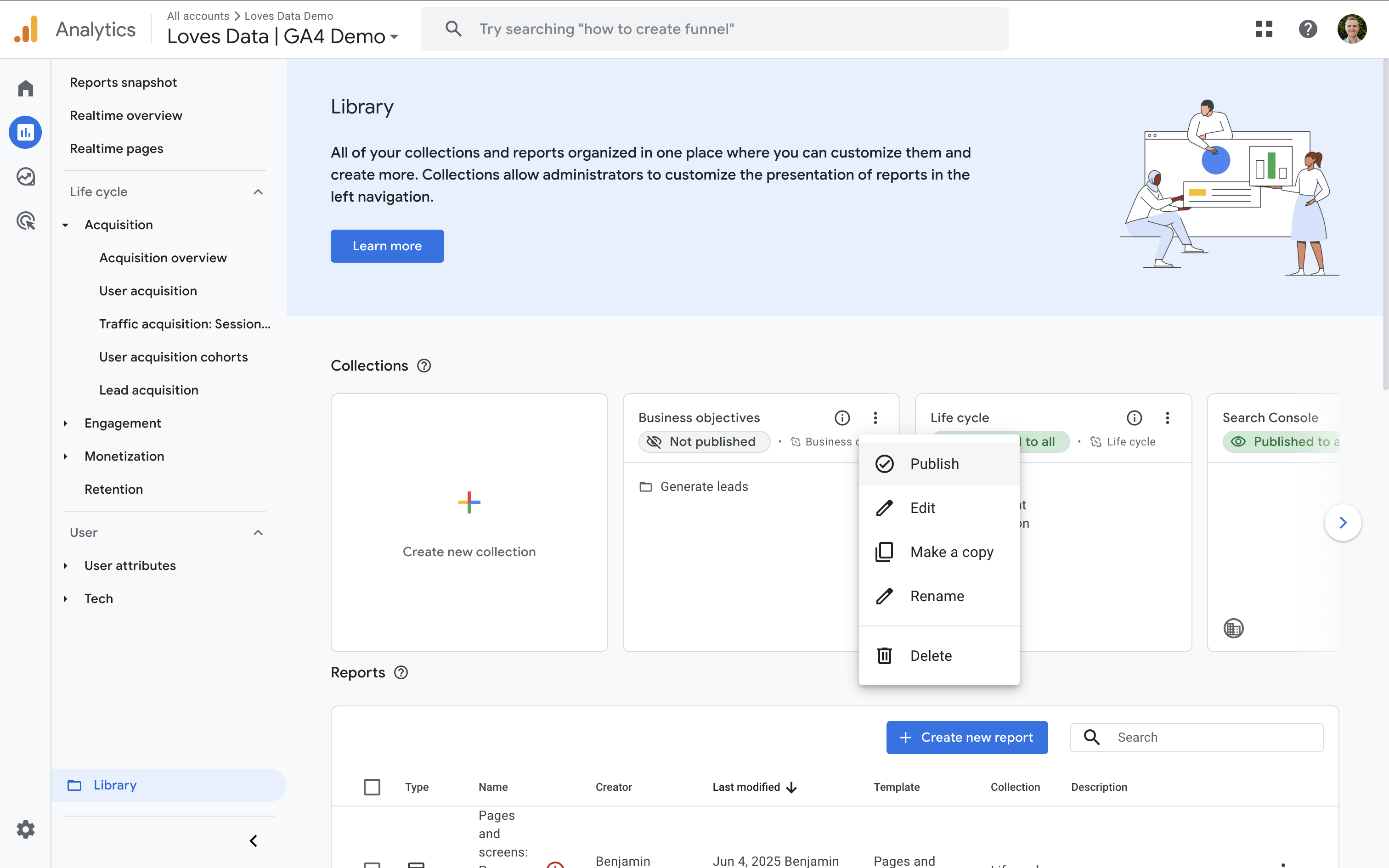
After publishing, you’ll see the lead generation reports appear under 'Reports'.
Understanding the Lead Generation Reports
Lead Acquisition Report
This report helps you understand how users first arrive on your website and become leads. It’s user-scoped – meaning it focuses on individual people (users), not sessions or page views.
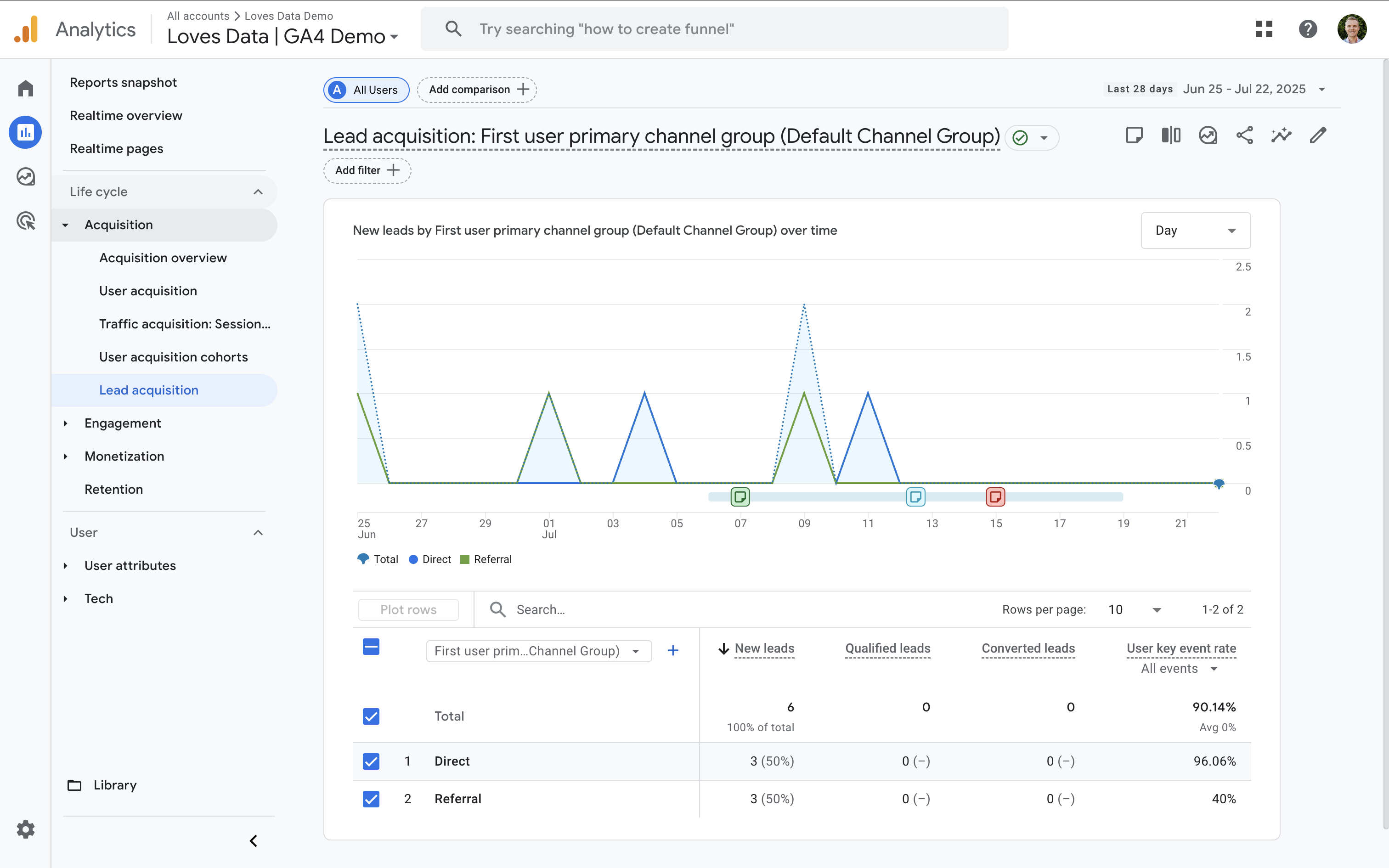
In the report, you’ll see:
- New Leads for people who triggered the
generate_leadevent - Qualified Leads for people who triggered the
qualify_leadevent - Converted Leads for people who triggered the
close_convert_leadevent
You can break these metrics down by 'First User Default Channel Group', 'First User Medium', 'First User Source', and other dimensions to understand what’s driving performance.
Tip: The report shows you the first method someone used to find your website. So if they visit your website using multiple source and medium combinations, you will just be viewing the first method they used in the report.
Using the report:
- Compare traffic sources to find which ones drive high-quality leads
- Use secondary dimensions like device category to spot trends
- If metrics show zero, check that the recommended events have been implemented
Lead Disqualification and Loss Report
This report helps you understand why some leads don’t move forward. It includes the following dimensions:
- Lost Lead Reason to report why leads didn't convert based on the value of the
unconvert_lead_reasonparameter sent withclose_unconvert_leadevents - Disqualified Lead Reason to report why leads were disqualified based on the value of the
disqualified_lead_reasonparameter sent withdisqualify_leadevents
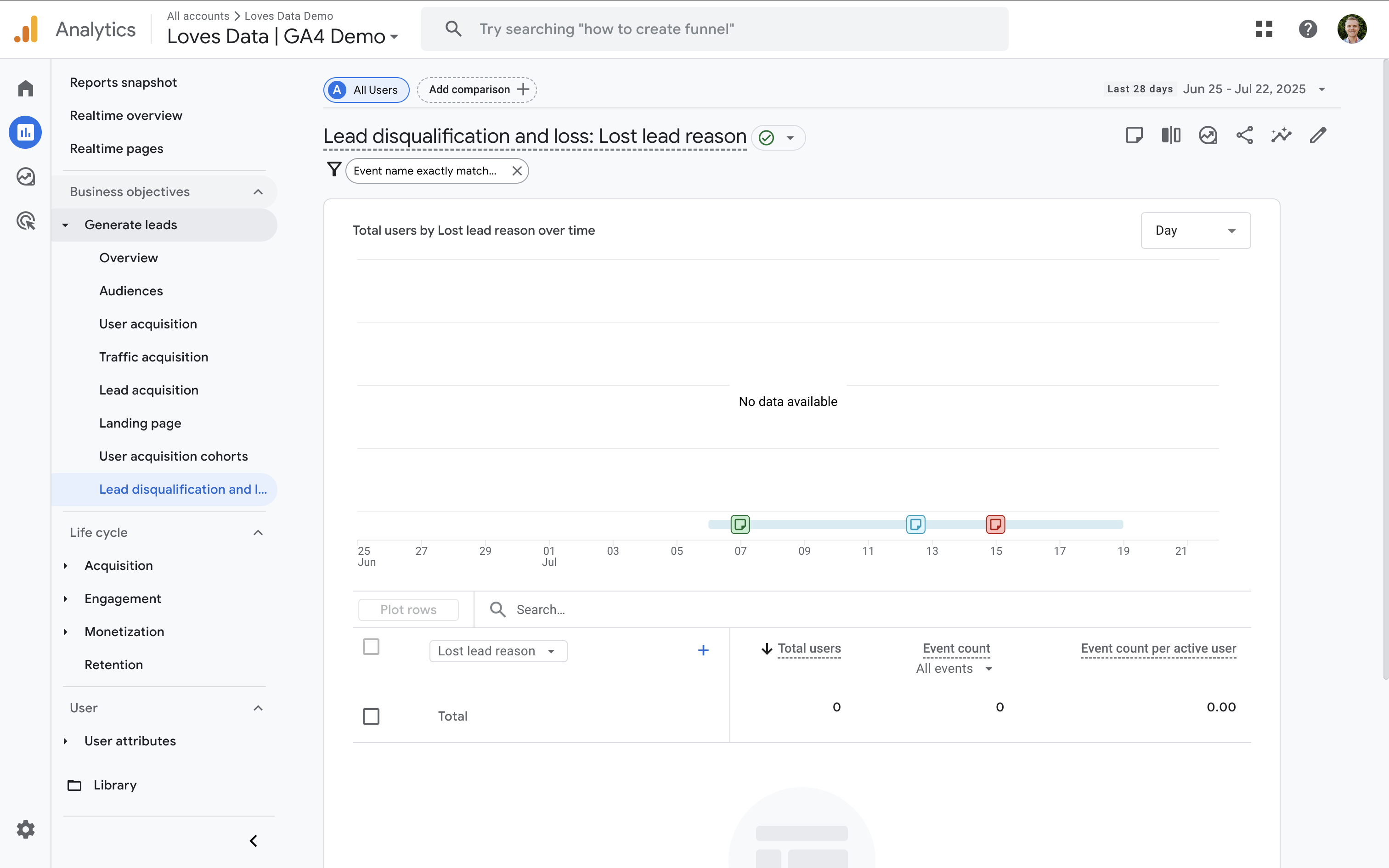
You can include custom values for these parameters to track the reasons leads drop off for your business or organization. You might send values like 'budget too low', 'not ready to buy', or any reasons that fit your lead qualification process.
Using GA4's Lead Generation Audience Templates
Google Analytics includes eight pre-built audience templates for lead generation. These help you segment users based on where they are in your lead funnel.
You can find them by navigating to 'Admin', then selecting 'Data Settings' and choosing 'Audiences'. Click 'New Audience' and select the 'Generate Leads' tab.
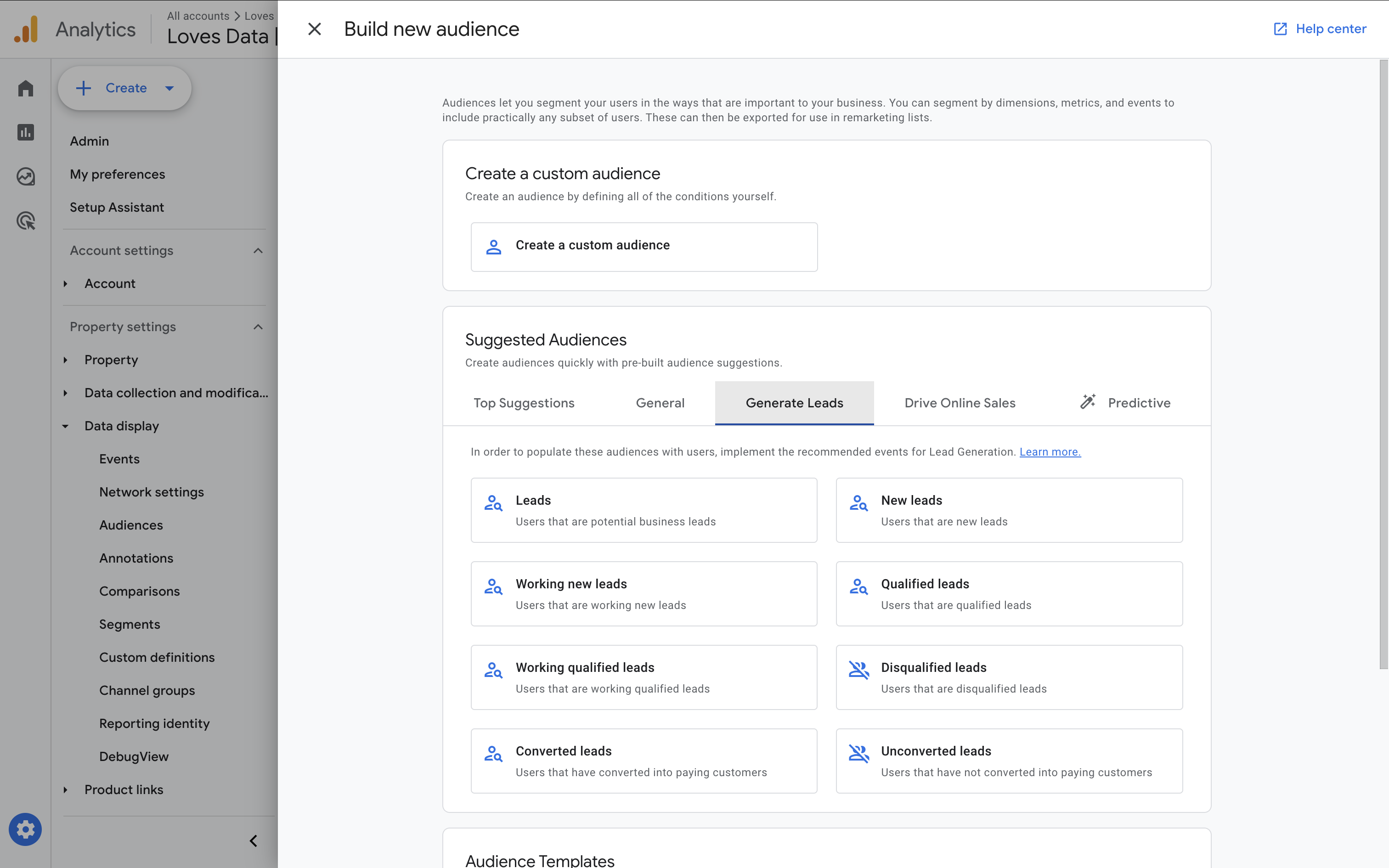
Here are the audience templates and when you might want to use them:
- Leads for all users who triggered the
generate_leadevent. This can be used for general remarketing. - New Leads for recent leads. Useful for short-term nurture sequences.
- Qualified Leads for users you've marked as qualified. Great for sales campaigns.
- Disqualified Leads for leads that didn’t qualify. Exclude them from paid campaigns.
- Converted Leads for users who became customers. Use for upsell or retention.
- Unconverted Leads for users who didn’t convert. Re-engage with special offers.
- Working with New Leads for when you're actively engaging with recent leads.
- Working Qualified Leads for qualified and in progress leads.
You can use these audiences in Google Ads for retargeting, exclusions, or in GA4 reporting for comparison and segementation.
How to Implement the Lead Generation Events
To use these reports fully, you need to implement GA4's recommended lead events:
generate_leadwhen someone submits a formworking_leadwhen you're actively engaging the leadqualify_leadwhen you've marked them as a good fitdisqualify_leadif they're not a fitclose_convert_leadwhen they became a customerclose_unconvert_leadif they didn't convert
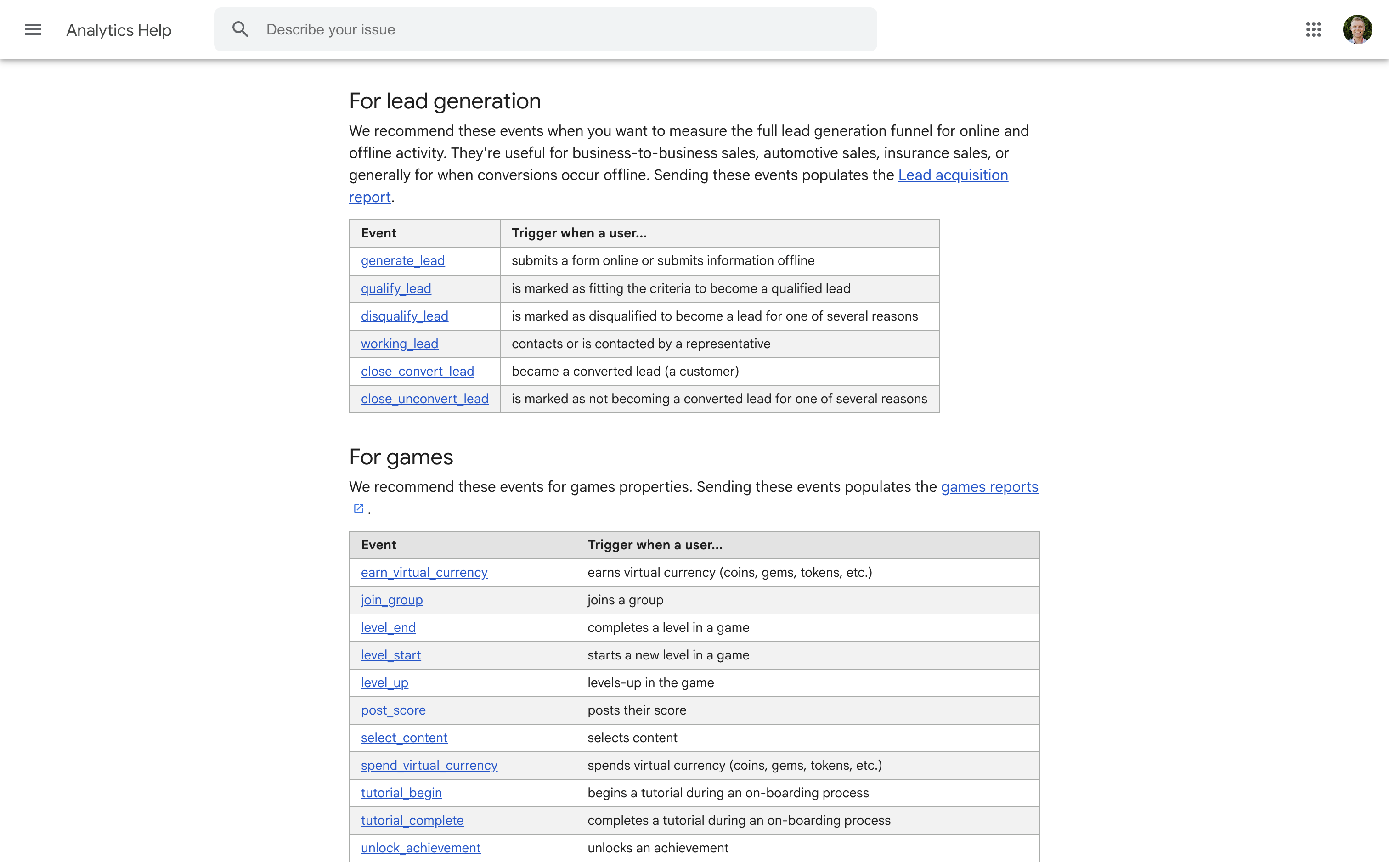
You can send these using Google Tag Manager, the Google Tag (gtag.js), the Measurement Protocol, or Event Data Import.
Each of the recommended events have suggesteed parameters you can use to send additional information. Some of these are important to send like the disqualified_lead_reason and unconvert_lead_reason since the values of these parameters will appear in your reports. While other paramters like lead_source which can be sent with the generate_lead event are optional.
Best practices include:
- Use GTM to align triggers with form completions and CRM stages
- Use DebugView to validate event setups
- Keep event names and parameters consistent
Why the Lead Generation Reports Matter
The lead generation reports in GA4 give you much clearer visibility into how people move through your funnel – from discovering your website to becoming a lead, and eventually converting (or not).
They help you see which campaigns are driving results, where people are dropping off, and how leads are progressing toward becoming customers. You can also identify gaps in your follow-up process and refine your audience targeting by creating segments based on each stage of the lead journey.
If you’re focused on generating leads and improving conversion rates, these reports can quickly become one of your most valuable tools inside GA4.
Frequently Asked Questions (FAQ)
Do I need special permissions to add these reports?
Yes, you’ll need editor or administrator permissions to add the Business Objectives collection to the reporting menu.
Why are some metrics showing zero?
Most likely, the corresponding recommended events haven’t been implemented on your site yet.
Can I customize the reasons for disqualification or loss?
Absolutely. You can send custom parameters with those events to reflect your business logic.
Where do I find the audience templates?
Go to 'Admin', then select 'Data Settings', and choose 'Audiences'. Click 'New Audience', then select the 'Generate Leads' tab.
Where can I learn more about implementing these events?
Check out the GA4 Recommended Events Guide or explore my courses covering GA4 and Google Tag Manager.

Comments